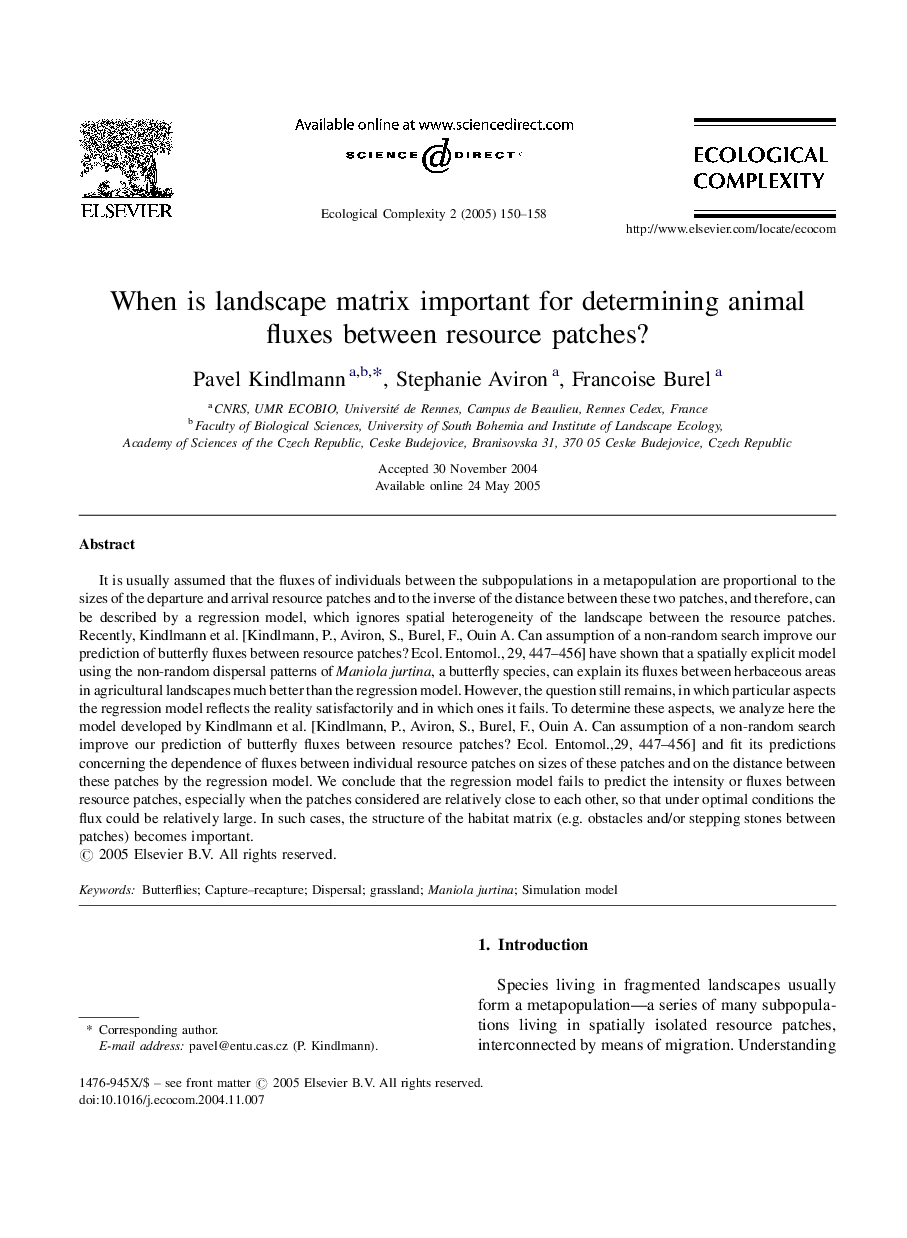| Article ID | Journal | Published Year | Pages | File Type |
|---|---|---|---|---|
| 9443111 | Ecological Complexity | 2005 | 9 Pages |
Abstract
It is usually assumed that the fluxes of individuals between the subpopulations in a metapopulation are proportional to the sizes of the departure and arrival resource patches and to the inverse of the distance between these two patches, and therefore, can be described by a regression model, which ignores spatial heterogeneity of the landscape between the resource patches. Recently, Kindlmann et al. [Kindlmann, P., Aviron, S., Burel, F., Ouin A. Can assumption of a non-random search improve our prediction of butterfly fluxes between resource patches? Ecol. Entomol., 29, 447-456] have shown that a spatially explicit model using the non-random dispersal patterns of Maniola jurtina, a butterfly species, can explain its fluxes between herbaceous areas in agricultural landscapes much better than the regression model. However, the question still remains, in which particular aspects the regression model reflects the reality satisfactorily and in which ones it fails. To determine these aspects, we analyze here the model developed by Kindlmann et al. [Kindlmann, P., Aviron, S., Burel, F., Ouin A. Can assumption of a non-random search improve our prediction of butterfly fluxes between resource patches? Ecol. Entomol.,29, 447-456] and fit its predictions concerning the dependence of fluxes between individual resource patches on sizes of these patches and on the distance between these patches by the regression model. We conclude that the regression model fails to predict the intensity or fluxes between resource patches, especially when the patches considered are relatively close to each other, so that under optimal conditions the flux could be relatively large. In such cases, the structure of the habitat matrix (e.g. obstacles and/or stepping stones between patches) becomes important.
Related Topics
Life Sciences
Agricultural and Biological Sciences
Ecology, Evolution, Behavior and Systematics
Authors
Pavel Kindlmann, Stephanie Aviron, Francoise Burel,
